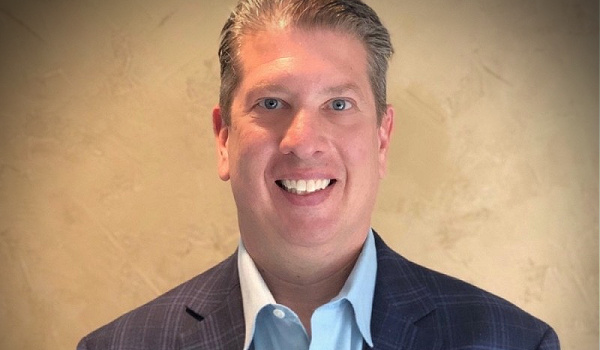Part 1: Setting Intentions
As Financial Advisors set personal resolutions for the New Year, one of the things they need to focus on is understanding what their clients’ resolutions are and what their expectations are. Generally, the focus is mostly on self-improvement: for example, losing weight, going to the gym, eating healthy food, or reading more books. But, as Advisors, do we take the time to understand—from a business perspective and personal view—the clients’ personal and professional goals or expectations? Or how have they changed?
Indeed, so much has changed over the past three years. We faced a global pandemic and the geopolitical changes that entailed. We are facing inflation and continued regulatory uncertainty as an aftermath. Change has been constant. But have we changed our processes, way of thinking, and way of conducting business?
“What we termed as a ‘back to work approach’ is in fact ‘back to a physical office’ because advisors never really stopped working. Early during the pandemic, people worked much longer hours. If you think about that from a client’s expectation point of view, are they still expecting those early morning starts or after-hours work? As professionals, we must set our intentions and touch base with our clients to understand their expectations of us as Advisors,” says Michael Partnow, Group President, Wealth Management at JIFFY.ai, an autonomous enterprise platform for the Wealth Management industry.
Communicating Expectations
Whether as an in-person meeting or on camera, clients still expect the same level of service or even more. As people have gotten to know one another more closely, especially regarding allowing someone into their homes (via camera) or personal spaces, a lot has changed around how we should conduct advisory business today, says Partnow.
Much can come from open-ended conversations with clients versus starting the year by ‘dusting off’ the open item list that has been untouched for two or three weeks. The best way for Advisors to set the right intentions with clients is through a honest conversation that weaves in both their personal and professional goals.
Changes must have happened in the clients’ personal and professional lives as well. Gathering their suggestions on meeting expectations, updating them on your processes, or informing them of specific trends emerging are all great places to start a conversation.
Advisors must also ask themselves whether their expectations or goals have changed, and how do they plan to conduct business in the New Year. Exceeding clients’ expectations involves understanding well-defined goals and precise measurements of success. Asking thoughtful questions like these can help guide the conversation with clients:
- “What are your expectations this year?”
- “How do you measure success?”
- “What did I do well for you?”
- “What did we not do?”
Asking The Right Questions
Creating an environment where there is a two-way street for communication is the first step in asking those big, bold questions. While your clients may not always come back with the answers you want to hear at that very moment, providing them with your incredibly thoughtful response can be impactful.
“If a client told their Advisor, I think our website is dated, I’d like to sign on and have fireworks and glitter, shoot out every morning, etc., it’s not a realistic expectation. Open conversations and explanations turn client and advisor interactions into a two-way street. This openness enables Advisors to explain to clients that it’s not realistic, or that remaining incredibly aggressive in their growth strategy while expecting a minimum return of 10% may not be realistic either in this market environment,” Partnow says.
The old rule of thumb was that if there were eight slices of pie, one should try to get as many pieces as possible. The new generation taught us a new way of thinking: let’s enjoy the pie together. Let’s split it equally. Let’s have a win-win. And let’s work to improve the recipe as we advance.
Turning Opportunities Into Intentions
Navigating changing expectations as the next generation inherits will be critical to the success of Advisors in retaining the assets of their clients. Globally, the Wealth Management industry needs to catch up in some areas, as speed has become a key expectation of the younger generations. For example, how we communicate, access data at our fingertips—termed flexibility in the clients’ language—or text and monitor emails.
How do we support a digitally smart generation following their expectations? We, as an industry, need to examine the current regulations and update them in sync with the changing times, says Partnow.
However, most Advisors are laser-focused on satisfying the regulatory aspect of the business, and the clients’ needs, unfortunately, come only second in priority. Successful Advisors determine how to satisfy that regulatory constraint or restriction and deliver a delightful client experience at the same time.
Going forward, we may only partially understand the concept of the office space as we know it now. In the past, the office space and physical locations dictated an Advisor’s space—because that’s where their desk was and where they conducted business. Today, where we work, meet clients, and conduct business has changed. In some cases, the client determines these coordinates.
Advisors must think how their technology should better support their clients and themselves compared to the early days of the pandemic. For example, staff had to come to the office to deal with mail because our industry required that we send monthly statements or daily trade confirmations. For that, we put our single largest asset—our people—at risk.
Organizations and leaders must ask themselves, what have we done to accommodate a flexible work schedule? What is the best technology we can use, and how can we de-risk our processes so we don’t have to put people at risk? Now is the time for organizations to be thinking about automating processes so that individuals no longer must go to offices to do those mundane, repeatable tasks.
As Jim Henson said, “Machines should work; People should think,” Partnow adds.







